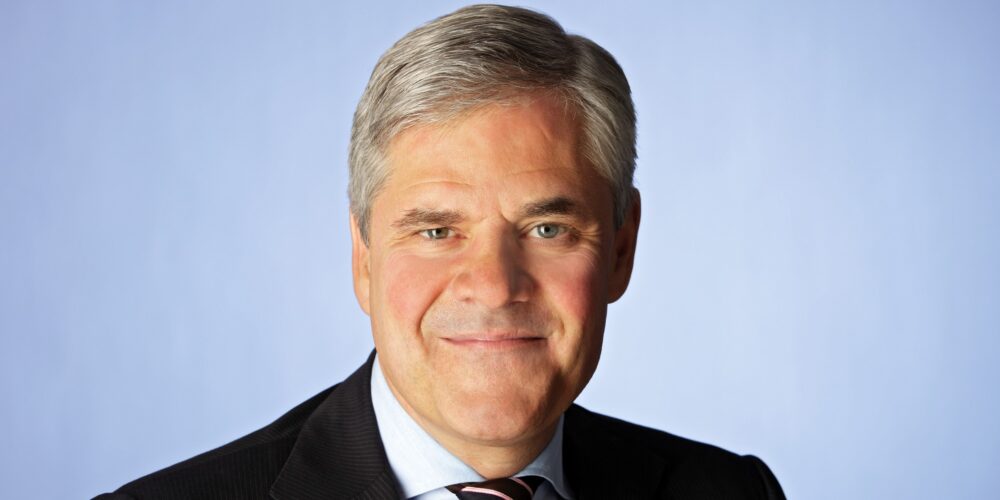Six reasons Silicon Valley Bank isn’t another 2008 crisis
 Prof. Dr. Andreas R. Dombret
Prof. Dr. Andreas R. Dombret
by Andreas Dombret
This article was originally published in the Financial News.
Whenever a bank fails it poses multiple challenges for numerous constituents, besides the employees. Shareholders may lose their entire investment; depositors risk taking a hit if their deposits exceed the insurance threshold; borrowers and other customers may lose an important bank relationship, especially if they have been relying on the bank’s funding. But if an individual bank failure leads to a wider crisis of confidence it can pose a systemic threat to the entire banking sector – something we experienced 15 years ago in the Global Financial Crisis. The fear of contagion and of negative spillovers creating domino effects always play a significant role in banking crises.
These worrying times seem to be back with us again. Last Wednesday the small crypto bank, Silvergate, took the decision to wind down, following the collapse of FTX, and announced a voluntary liquidation. On Thursday the markets were shocked by the developments at Silicon Valley Bank (SVB), the 16th largest US banking group. Depositors withdrew some $42bn, nearly 25% of SVB‘s entire deposit base. By any standards this was a veritable run on the bank. By Friday, the FDIC had taken control of SVB, a large lender to the tech sector. With more than $200bn in assets, SVB is the 2nd largest US banking failure ever. Volatility in bank stocks spiked everywhere. Who would have guessed at the beginning of this year we would have such a bank run in March 2023 with serious real economy effects?
So what has gone so wrong at SVB? It had a unique market position as a housebank for the startup ecosystem as well as many of the providers of risk capital to the sector. It was thus home to cash belonging to half of all venture capital backed startups in the US. Its deposit base, which had risen substantially during pandemic times, was unusually fickle, though. The vast majority – 96% in fact – was uninsured. Uninsured depositors are seen as especially “flighty” by markets and by bank supervisors. As its deposit base was rapidly eroding last week, SVB was forced to sell bond holdings to raise cash. In the process it crystalized losses as the value of its fixed rate bond holdings had suffered due to rising interest rates. An attempt to raise additional capital from elsewhere failed.
Supervisors are now examining any systemic threats this bank failure is likely to pose. The calls for fire sales of SVB assets are getting louder. The market is already hunting for look-alikes all of whom are putting out reassuring comments. Janet Yellen, US Treasury Secretary, has ruled out a fully-fledged public bailout but is considering support for depositors. The Federal Deposit Insurance Corporation (FDIC) and the Federal Reserve are on the case, as are authorities all over the world.
So are we facing a threat to financial stability here reminiscent of 2008?
I think this is an unlikely scenario, and here are six good reasons why:
- Very few banks have such a high concentration of business in one sector in the way SVB did.
- One would be hard pushed to find another bank with such a “hot” deposit base.
- No other banks have such a magnitude of unrealized losses on their “held to maturity” only securities portfolio.
- As a regional bank SVB was less tightly regulated than other US banks of its size, e.g. it was not subject to the Liquidity Coverage Ratio.
- Despite its size there are enough banks, both in the US and abroad, that can take over SVB’s assets. Beware of existing US deposit caps, though.
- SVB is now in orderly resolution, and the FDIC is an experienced, skilled authority.
All this suggests that SVB is very much an outlier. Its business model showed significant weaknesses, and it mismanaged its interest rate risk position by investing in fixed rate securities locking at very low yields.
If the twitterrati start spreading alarm we could theoretically still end up with a banking crisis. The largest five US financial institutions with similar characteristics in terms of deposit outflows and major underwater securities books have combined assets of $1tn. But bear in mind that the banking system, as a result of the Global Financial Crisis, is strongly capitalized and has ample liquidity.
Fortunately regulators did not pay too much attention to bank lobbyists in the past decade who argued constantly for reduced capital requirements. Instead regulators kept insisting banks strengthen their balance sheets, thereby increasing bank resilience to today‘s high levels. It is now up to the relevant public authorities to stabilize the markets once again and to organize an orderly resolution of SVB. We can be confident that the FDIC, the Fed and others will be successful. They know what they are doing.
Nevertheless, it is the case that almost all banks are facing the problem of underwater securities as well as deposit outflows. And the macro environment poses challenges due to persistently high inflation, which is being fought by rising interest rates as well as by Quantative Tightening. But at the moment there is certainly no crisis of confidence in the banking system and very little risk of contagion. No banks other than SVB have had to incur big losses by selling low-interest bonds in a hurry to satisfy customer withdrawals
SVB, the outlier, is very much the exception. This is why I see the SVB case as a warning signal but not a cause for overreacting.
The tech sector, though, including fintech companies, is going to be very much affected by the collapse of SVB and will need to find banking alternatives. The venture capital sector, which relied on SVB for funding, is also facing a cash crunch and that will have negative consequences. But this is a separate issue that the authorities need to address very carefully, because the tech sector has developed into a such an important part of our economies.
Andreas Dombret sat on the Board of the Bundesbank, the German central bank, from 2010 to 2018 where he oversaw financial stability as well as bank supervision. From 2014 to 2018 he served on the Supervisory Board of the European Central Bank, the ECB. He is a member of the Board of Atlantik-Brücke.
